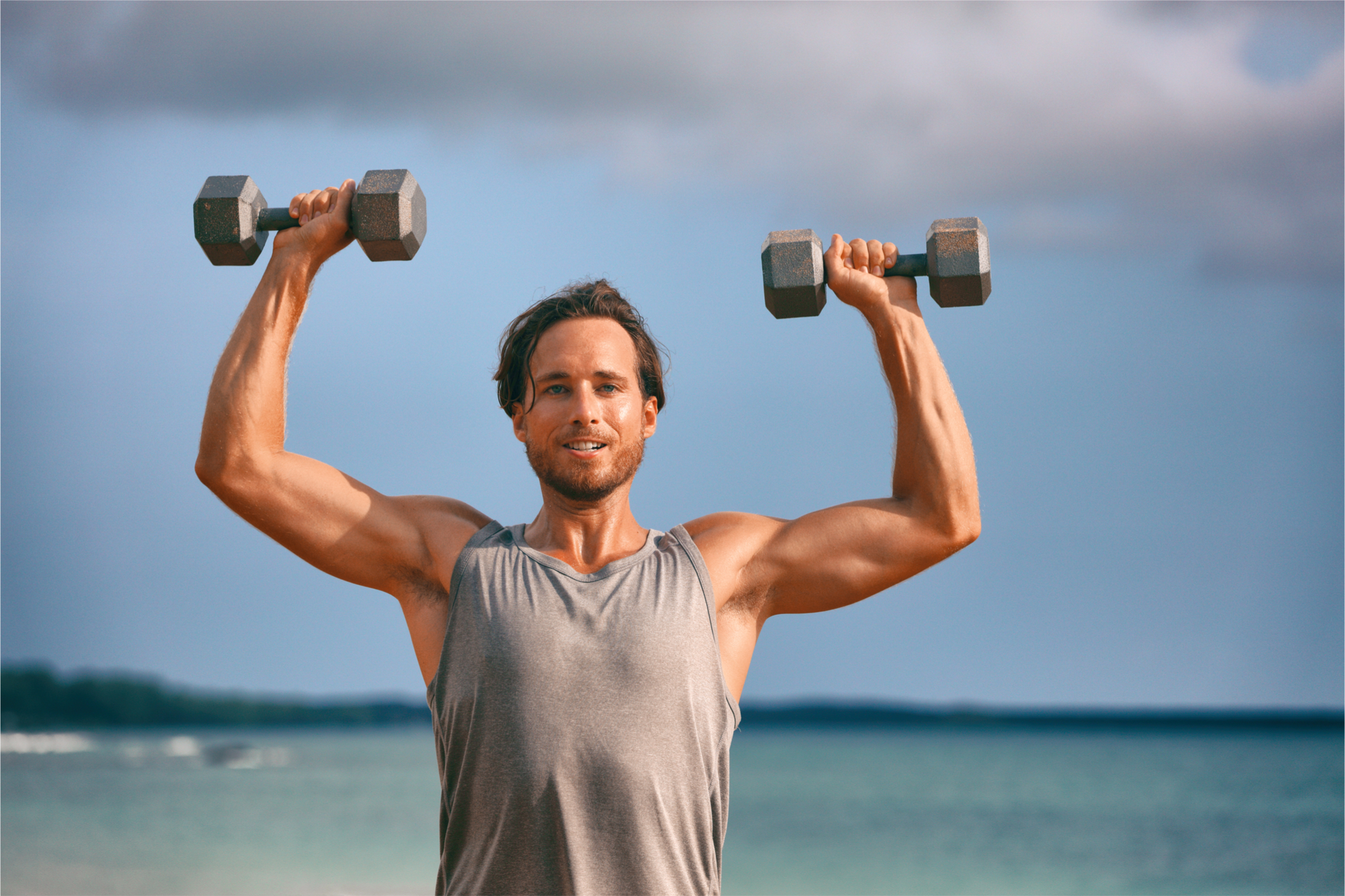
11 Feb PhysioFit Q & A – How to Strengthen your Shoulders and Avoid Pain

You don’t have to suffer shoulder pain in the gym. Watch out for these common mistakes that could be holding you back!
Are you trying to strengthen your shoulders in the gym but persistent, nagging pain won’t let you? Shoulder pain doesn’t have to be a given, read on for some quick tips on how to build bulletproof shoulders pain-free.
Over 35% of people who weight train will get shoulder injuries and research shows it could be down to poor exercise choice. You NEED to know what exercises and techniques could be doing you harm.
If not addressed thoroughly shoulder pain can to lead to serious injury, meaning time out of the gym, extended rehab, surgery (or both) and in some cases may lead to irreparable damage. Not to mention the fact that most people with shoulder pain can’t get a comfortable night’s sleep! Ouch!
By training smarter you can stay in the gym working hard towards your goals while avoiding permanent damage, decreasing your chance of future injury risk and eliminating your pain.
“Too often we see people who have been told, often without a thorough clinical assessment, that their shoulder pain is a life-sentence and to avoid training shoulders altogether! Avoiding exercising an area will never bring long-term, meaningful, improvements!? It doesn’t work.”
If you’re looking to break the cycle of “train shoulders à get pain” then keep reading. This Q&A might just contain the solutions to your shoulder pain!
A fantastic, recently released study highlighted some quick and easy modifications you can implement to allow you to achieve similar results without the heart-ache (or shoulder ache).
Question: How do I continue to bench-press when every time I do I get pain in my shoulders and they ache for days after?
Answer: Ah Bench Press, one of the big 3 lifts and a favourite of many of our clients. Try the following modifications:
- Don’t do it alone: firstly, where possible use a spotter to rack and un-rack, this lessens the load through your shoulders when in extremes of external rotation.
- Bring your hands closer together: try having your hands just greater than shoulder width apart.
- Reduce the bar depth: place a towel or pad 4-6 inches off your chest.
- Change your grip position or use dumbbells: a range of different bars are now creeping their way into gyms. This allows you to play around with hand positions e.g. neutral vs traditional prone and offer you ways to load your shoulder differently during the press, avoiding painful positions.
Question: I’ve had a range of shoulder injuries and have been able to return to most exercises however; the barbell military press remains a problem for me. Any tips on how to conquer it?
Answer: The barbell military press is no joke, it’s tough and unforgiving but try these modifications to change-up your lifting and build your over-head strength:
- Keep your elbows forward: move your hands and elbows so they track well in front of the shoulder during the press up and down
- Dumbbells are your friend(s): alternate using dumbbells to find your pain-free path to overhead loading.
- Back-to-front: If using a traditional shoulder press machine, this study found that sitting backward (chest to the seat) allowed for better mechanics at the shoulder.
Question: I understand that lifting two parked cars during a lateral shoulder raise is unrealistic but I still experience pain even when using what should be manageable weights for me?
Answer: the lateral raise is a great exercise but a ‘usual suspect’ for causing shoulder pain in elite and recreational athletes alike. Try the below:
- Thumbs up: Make sure you keep your thumbs (and the dumbbell) pointing upwards
- Keep your eyes on your arms: Instead of arms far-out to the side bring them forward slightly, so they are in your line of sight. A guide is that you should be able to clearly see both elbows while looking forward during the movement. And again keep the thumbs up.
These modifications aren’t a cure-all but most of the time they are a strong starting point to allow you to gradually progress into the full-unrestricted version of these exercises and achieve your strength and power goals.
If any of the above relates to you then you’ll be pleased to learn that our physiotherapists are here to help. We have great experience not only in the physio clinic but helping people in the gym. Not only can we diagnose and treat your shoulder pain, we can help you with a program that will avoid relapse of your shoulder pain.
If you want to learn more about the modifications recommended above you can find the study here or come in and see us.




